Automatic mortar 2B9M "Vasilek" in the Special Operation
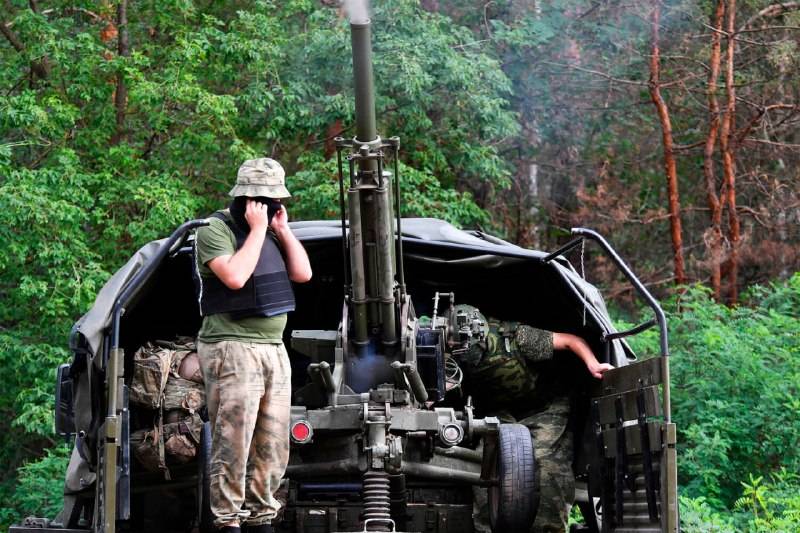
Mortar 2B9M in self-propelled version, owned by NM LPR. Photo Telegram / "Military informant"
Since 1970, the 82-mm towed automatic mortar 2B9 "Vasilek" has been in service with the Soviet and Russian armies. He had special combat capabilities and characteristics, thanks to which he still remains a relevant and effective weapon. Products 2B9M are also used in the current Special Operation. They are used both in the original towed and self-propelled versions.
Mortars in combat
As far as we know, mortar units of the ground forces of the Russian army and the republics of Donbass have been participating in the Special Operation since its first days. Their task is to destroy the enemy and his objects by fire, as well as to support our other units. For this, the entire range of mortar systems is used, incl. towed products "Vasilek" of the current version 2B9M.
Such guns are used as part of the 9K21 mobile mortar systems. In addition to the mortar itself, this complex includes a transport vehicle of the Ural-4320 type, means of communication and control, as well as ammunition. Depending on the situation, "Vasilek" can be towed by a transport vehicle or transported in a body. The machine is also carrying the calculation of guns and boxes with ammunition.
To improve combat performance, the mobile complex can turn into a full-fledged self-propelled mortar. In this case, "Cornflower" is placed in the back of a car in a combat position, and the fire is fired directly from the car. Due to this, the time to prepare for firing is reduced, and leaving the position is also accelerated.
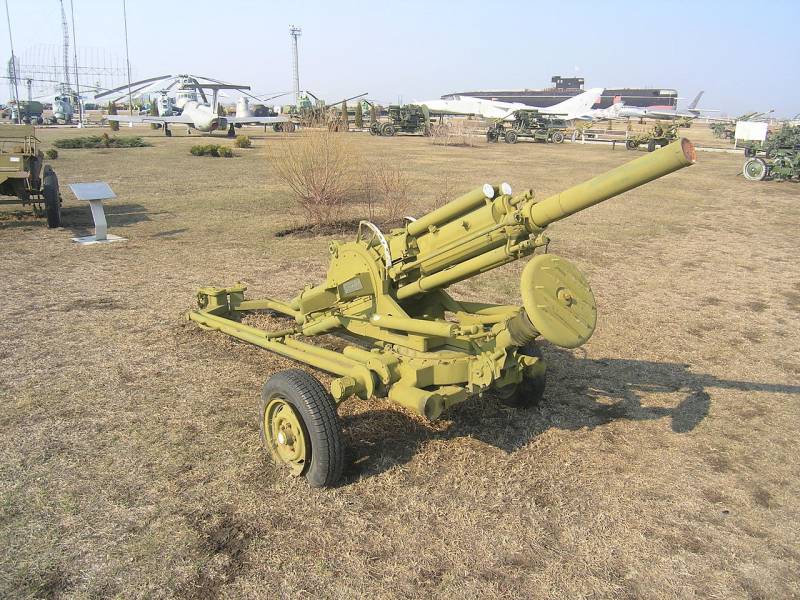
Mortar 2B9 "Cornflower" of the first version. A characteristic casing for cooling the barrel is visible. Photo by Wikimedia Commons
Recently, the Zvezda TV channel showed a similar self-propelled mortar belonging to one of the artillery units of the DPR police. It is reported that this version of the 9K21 complex shows high fire performance. Its speed is also confirmed. A well-coordinated crew solves a typical fire task in 7-8 minutes, after which it leaves the position and does not fall under a retaliatory strike.
Obviously, in terms of firing range or the power of the 82-mm Vasilek ammunition, it is significantly inferior to other domestic mortars. However, it occupies its own niche and complements systems of its own or larger caliber in solving part of the fire missions. In essence, it takes over some of the work and makes field artillery a more flexible tool.
Half a century in service
Even during the Great Patriotic War, designer V.K. Filippov proposed the idea of an automatic mortar, which has obvious advantages over existing systems. Soon the development of a similar project began, and in 1946 the first experimental "casemate automatic mortar" KAM of 82 mm caliber appeared. This gun was intended for the artillery of fortified areas. The development of such a mortar was delayed, and it was put into service only in 1955.
Already in 1954, under the leadership of V.K. Filippov at the Design Bureau of Transport and Chemical Engineering (KB TXM), the development of a field modification of the KAM mortar under the designation F-82 began. This product was tested at the end of the decade and received a recommendation for adoption. However, for various reasons, the army did not receive a new mortar on a towed carriage.
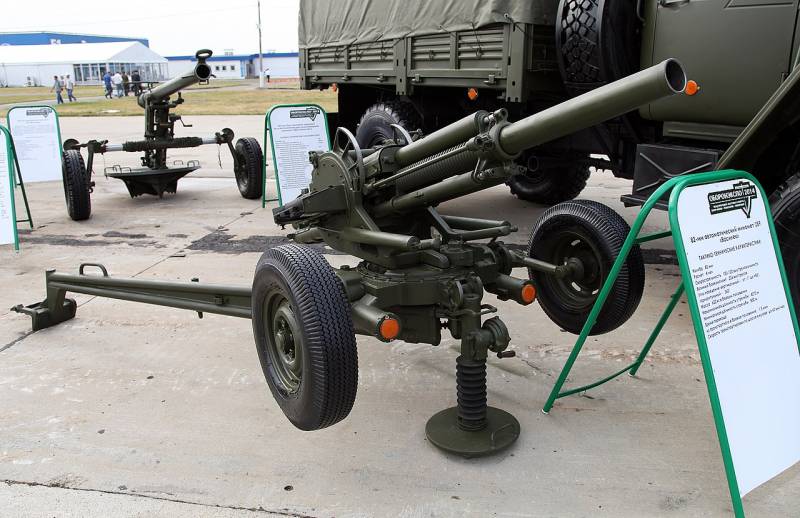
Modern 2B9M. Photo Vitalykuzmin.net
Work on the topic of automatic mortars continued only in the second half of the sixties. Their result was the appearance of the product 2B9 "Cornflower". In 1970, he was put into service, and soon the re-equipment of mortar units began. A few years later, a modernized version of the 2B9M mortar was developed. It was distinguished by a simplified design and showed the same combat characteristics.
The bulk of the Vasilkov was produced for the Soviet army and was intended for use at the battalion level. They armed the corresponding platoons of mortar companies from the motorized rifle, airborne, and other battalions. In other platoons of these companies, other 82-mm systems were used.
2B9 mortars were exported to a limited extent and entered service with friendly countries. In addition, Hungary was given documentation for the independent production of such weapons. In connection with the collapse of the USSR, the list of foreign owners of "Cornflower" has increased significantly.
The combat use of automatic mortars began in 1979-80. in Afghanistan. "Cornflowers", along with other mortars, were used to solve all regular tasks and, on the whole, showed themselves well. At the same time, ways to further improve performance were proposed. The main was the installation of a mortar on a tractor and its use as a self-propelled system.
Products 2B9 (M), which remained in the post-Soviet space, were actively used in all major local conflicts. First of all, these were two Chechen wars. Since 2014, the Ukrainian army has used its "Cornflowers" against the unrecognized republics. At the same time, part of its mortars, as well as other weapons and equipment, became trophies of the militia and police. Apparently, the self-propelled 2B9M, recently shown by the DPR mortarmen, previously belonged to Ukraine.
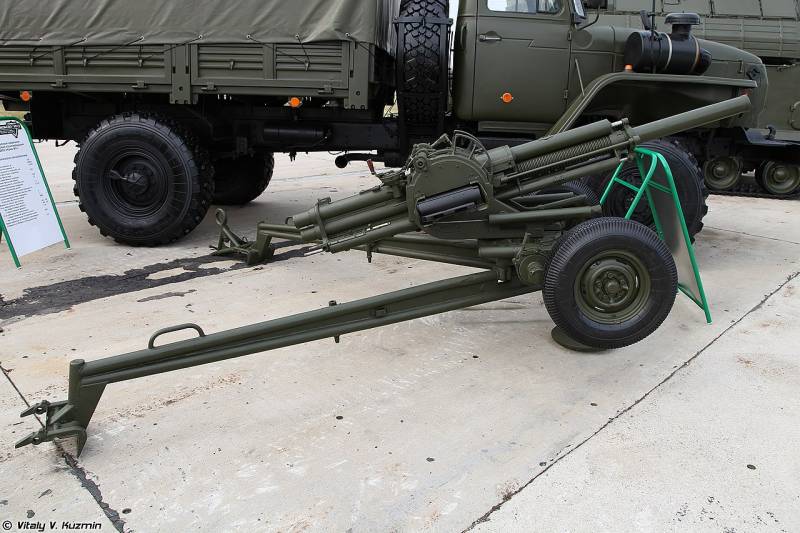
Side view. The cassette tray and shutter box are clearly visible. Photo Vitalykuzmin.net
Technical features
Product 2B9(M) is a towed mortar, however, it has a number of features that are not typical for this class of artillery. Due to this, high technical and operational characteristics are provided, as well as special combat capabilities are achieved.
"Vasilek" is built around a smooth 82-mm barrel of medium length. In the basic version of the 2B9 mortar, the barrel was placed inside a metal casing filled with water for cooling. The upgraded 2B9M uses air cooling, for which fins are provided on the barrel. The barrel is rigidly fixed on the trunnions and does not roll back when fired.
Behind the barrel is a bolt box with a movable bolt. The shutter rollback and reloading are carried out due to the energy of the powder charge. The bolt is fed forward by means of return springs placed next to the barrel. The trigger mechanism allows you to shoot single shots or a burst of 2-4 shots.
On the right side of the bolt box there is a tray for receiving a cassette with mines. Regular loading of the mortar is carried out by a four-shot cassette. If necessary, muzzle loading is possible.
Unlike other mortars, Vasilek is built on a full-fledged carriage. The upper rotary part of the carriage has guidance drives, recoil devices for the barrel and a balancing mechanism. Provides horizontal guidance within 60 ° and vertical from -1 ° to + 86 °, so that the mortar can fire direct fire. Guidance drives - manual. The PAM-1 sight is used.
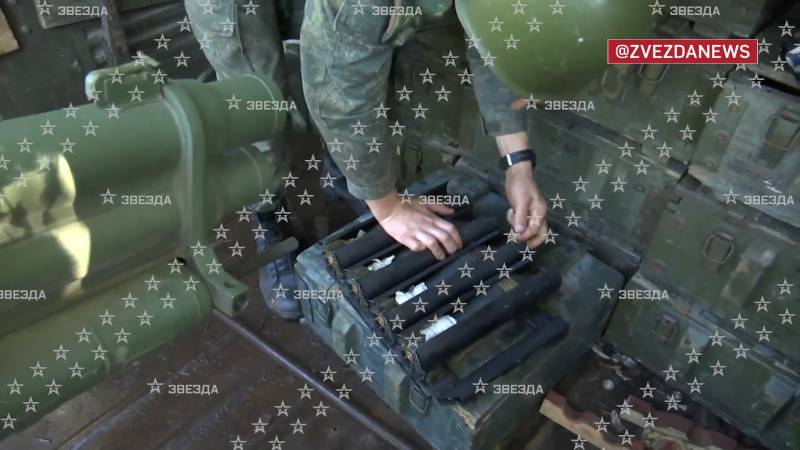
Mortar NM DPR prepares a cassette with mines. A frame from the reportage of the TV channel "Zvezda"
The lower carriage machine is equipped with a front base plate on a jack and two movable beds. There is a wheel drive with a torsion bar suspension. In a combat position, the mortar rests on a plate and beds; wheels are hanging out. Towing is carried out with flattened beds and a raised plate, the barrel back. The design of the carriage allows transportation on the highway at a speed of 60 km / h.
Mortar 2B9 (M) is capable of using all domestic 82-mm mines. First of all, these are high-explosive fragmentation rounds of the O-832 series. Also, the ammunition includes smoke, lighting, propaganda, etc. mines. For direct fire at armored objects, a cumulative mine is proposed. The maximum firing range, depending on the type of ammunition, is 4270 m.
The cassette feed mechanism for mines and the automation of the gun provide a technical rate of fire of 170 rds / min. Practical significantly lower - no more than 120 rds / min. If it is necessary to fire for a long time, even a trained crew can do no more than 50-60 rounds / min.
Realized potential
Automatic mortar 2B9 (M) "Vasilek" is radically different from other systems of this caliber. During its development, fundamentally new solutions were used, which made it possible to obtain a sharp increase in performance. As a result, Vasilek outperforms other 82mm mortars in terms of firing performance, and the results of such firing bring it closer to more serious 120mm systems, although with limitations in terms of range or power of an individual mine. With all this, 2B9 is quite simple to operate and use.
The unusual mortar did not immediately enter service with our army, but then it got into units and has been in service for half a century. "Cornflowers" were repeatedly used in real operations and confirmed the potential of the embedded solutions. As the events of recent years show, the automatic mortar is still relevant and capable of making a great contribution to the overall results of the work of field artillery.
Information